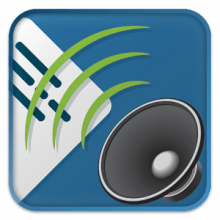Windows 10 1903: Here's what's New in Accessibility
Quite a while ago, Microsoft started showing that they are indeed taking accessibility concerns into account. As a result, with every update from the Windows side, we can expect for some accessibility improvement. Sometimes it's more, sometimes it's less. What we know is that we'll always have something new to look into or play with.
With Windows 10 May 2019 update - also known as version 1903, here's what's new in accessibility.
Making Windows easier to see
Bigger, brighter mouse pointers
In the previous release, Microsoft made it easier to make text larger across Windows. According to Microsoft, more than 900,000 people are using larger text to make Windows 10 easier to see. However, included on this group were people that while welcoming this change also were reporting difficulties to track the mouse pointer, particularly on high resolutions displays.
Taking this feedback into consideration, here comes the first improvement for accessibility on the May 2019 Update. You now have more ways to customize Windows 10 appearance as you like, with the adition of bigger and brighter mouse pointers. Still, in adition to making the pointer larger, you also can take advantage of Microsoft's suggestions, using a recommended set of bright highlight colors or you can also change the pointer to your favorite color just by going to Settings > Ease of Access > Cursor & pointer.
Magnifier improvements
Some users with low vision do use the combination of setting larger text and mouse pointers, which makes Windows easier to use. Nonetheless, Others prefer using Magnifier. With this in mind, Microsoft made several improvements to Magnifier in this release, including new defaults for Magnifier settings and smoother interactions when you choose to Keep the mouse pointer... Centered on the screen. Now, Magnifier will follow along with what you type and as you navigate Windows with your keyboard (e.g. navigating up and down a list with arrow keys) by default. Also, Microsoft has reduced jitter when the mouse is centered on the screen, which, according to Microsoft, is an option many people use to make their mouse pointer easier to find by keeping it in a predictable location.
Making Windows easier to use without a display, with Narrator
Thanks to users feedback, Microsoft has made a few other improvements to Narrator, their built-in screen reader for blind people. According to Microsoft, now Narrator is easier to learn, more natural and responsible and easier to use including with popular applications, like the Google Chrome browser.
Narrator is easier to learn
In the previous release, Microsoft introduced Narrator Quick Start, which is a built-in tutorial that helps users learn to accomplish common tasks like browsing the web or reading and writing emails. Once more, some users indicated that while this was an appreciative change, they were having difficulties finding all the Narrator resources. In light of this, Microsoft consolidated Narrator Settings, which were located in multiple places to make it easier to personalize Narrator. Also, Microsoft created the new Narrator Home to make it easier to access the Narrator Quick Start, User Guide and Settings; and to provide feedback to improve the Narrator experience directly to their team. They even made possible to minimize Narrator Home Page to the Windows Systray, to remove Narrator from the Alt + Tab sequence so you don't have to hear about Narrator every time you want to switch applications.
Narrator is more natural and responsive
Microsoft improved the way Narrator deals with certain common phrases. For example, phrases like "$2.7 billion dollars" are now read "two point seven billion dollars" instead of "two point seven dollars billion". Also, they have reduced the number of times Narrator pauses mid-sentence, which might make it a bit harder to read a document in Word or an article on the web.
Microsoft made Narrator more succinct (e.g. with improved URL reading). They also gave users more options to control what Narrator speaks. You can now hear as much or as little detail as you want about application controls and text. For example, if you happen to be reading a digital book or a long paper and all that matters to you is the text content, you can set your Verbosity level to 1 and be assured that you won't be bothered by other information that may be present on the page. Nonetheless, if you are actively authoring a paper and need to know all of the text formatting and control information, then you can set your Verbosity to 5. This way, you won't miss anything at all.
Microsoft made it easier to download and install aditional voices. Now you can download and install voices without having to install a complete language pack. For example, if you speak and type US English but you prefer UK English text to speech voices, you can install these voices without having to install the full UK English language pack. For this, just Go to Settings > Time & Language > Language and choose Add a preferred language to add specific language features.
And finally, Microsoft improved Narrator responsiveness with applications like Word and Outlook.
Narrator is easier to use, including with popular applications like Chrome
Microsoft has added support for Chrome, which means that now Narrator users can have a choice of browsers.
Also, they have added new ways to navigate that users need and expect. You can now move by sentence when navigating text (e.g. in an eBook, document or web page). You also can use Narrator reading commands to seamlessly read the contents of any application, from top to bottom or from bottom to top. For example, you can move by character, word, line, sentence or paragraph from the top of the Windows Settings application to the bottom without interruption.
Finally, Microsoft keep making it easier to consume content with Scan Mode. They made it easier to browse the web and read mail messages by focusing Scan Mode commands in the browsing content area or canvas, and message content area. You no longer need to worry about unintentionally navigating into the browser or mail application frame. Still, Microsoft also improved the way Scan Mode works with some controls. For example, you can now use your left and right arrow keys to adjust a slider control while in Scan Mode and you will be able to correctly identify editable combo edit boxes as Narrator will announce these as Combo Edit controls.
Some of the new Narrator shortcuts introduced in this release include:
- Windows logo key + Ctrl + N: Quickly Access Narrator's Settings
- Narrator + 0: Reads the advanced details of the control being focused on, e.g. for a link this will read the entire URL
- Narrator + V: Increase verbosity levels
- Shift + Narrator + V: Decrease verbosity levels
- Narrator + 5 twice quickly: Read current item spelled out
It's worth noticing that Narrator key can be either the capslock or shift key, depending on your settings.
Source: Windows Blog
- 895 reads
Your Help Required to Keep The Lights On!
Satisfied with the provided Services?
Show your LOVE and Secure BHp's Future.
Every single Penny helps, counts and means a lot
And will be spent to Deliver Even More.
Introducing Free Membership of BookShare for Pakistanis
Popular on BHP
-
Title: FDMR V1.0 (Free Download Mobile Ringtones)
 Type: softwareTotal views: 1,041,752
Type: softwareTotal views: 1,041,752 -
Title: AAct V4.3.1 Portable (An Activator for Ms Windows and Office)Type: softwareTotal views: 311,397
-
Title: Eloquence TTS for all operating systems
 Type: softwareTotal views: 226,886
Type: softwareTotal views: 226,886 -
Title: Vocalizer Expressive V2.2 for NVDA 25 and LaterType: softwareTotal views: 170,734
-
Title: NVDA V2025.3.2 with Eloquence - Portable Version IncludedType: softwareTotal views: 151,048
-
Title: Re-Loader 3.0, Windows plus Office activaterType: softwareTotal views: 139,176
-
Title: Microsoft Toolkit V2.7.1Type: softwareTotal views: 105,954





